The Philippines has a rich musical heritage****, shaped by various cultures and historical events.
The country's indigenous musical roots can be seen in instruments like the kulintang, a set of eight gongs used by the Maguindanao people. Another example is the rondalla, a type of ensemble music influenced by Spanish culture.
American influence introduced jazz, which shaped the development of Pinoy Pop. This genre eventually led to the emergence of Original Pilipino Music (OPM), a style showcasing the country's national identity.
The rise of Pinoy rock further contributed to the country's diverse musical landscape. Pinoy rock bands like APO Hiking Society and The Dawn gained popularity in the 1980s and 1990s.
In recent years, the adoption of digital production tools**** has revolutionized the Filipino music industry. Independent artists can now produce and distribute their music more easily, contributing to the growth of the P-Pop phenomenon.
Streaming platforms have also played a significant role in sharing Filipino music worldwide. Platforms like Spotify and YouTube have made it possible for artists to reach a global audience, further shaping the country's musical landscape.
Indigenous Filipino Music
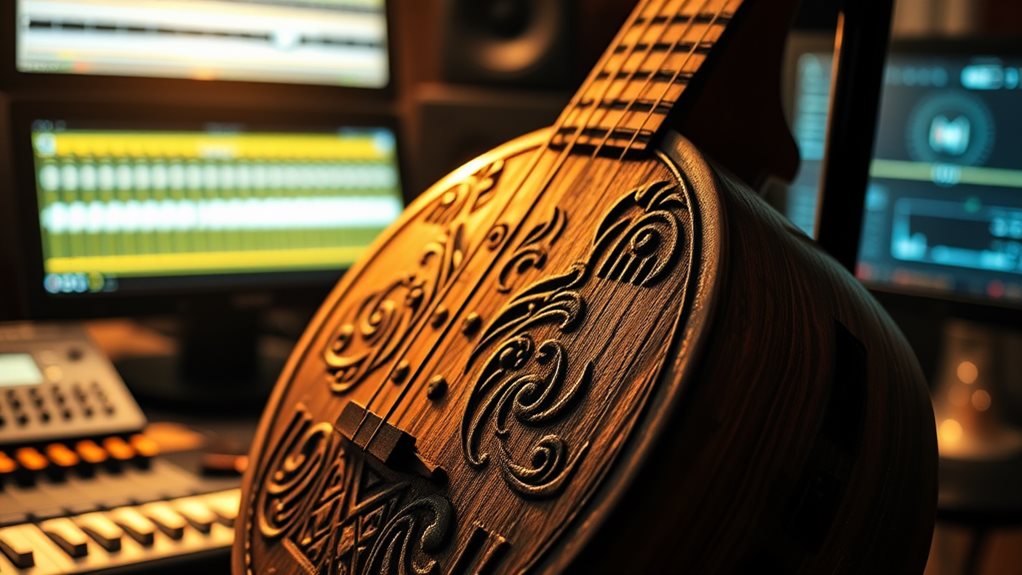
The Philippines is rich in indigenous musical traditions, with diverse ethnolinguistic groups creating unique sounds. Traditional instruments like the kulintang, a set of gongs, and the kudyapi, a two-stringed lute, are key examples. These instruments, along with agung gongs, bamboo instruments, and idiophones like buzzer and slit drums, add to the rhythmic complexity of indigenous music.
Pentatonic scales are commonly used in melodic patterns, reflecting the country's diverse cultural heritage. Rhythmic complexity is also striking, often syncopated and highly rhythmic, showcasing communal music-making. Regional variations exist, with distinct patterns in areas like the Cordillera and Mindanao. These musical forms are passed down through oral traditions, ensuring the continuity of indigenous heritage.
Indigenous music isn't just entertainment; it's deeply embedded in people's lives, marking life events from birth to death. It's often used in healing rites, weddings, and even daily work songs.
The cultural diversity is truly remarkable, with each ethnolinguistic group possessing its own unique musical expressions. Songs are often sung in different languages and dialects, demonstrating linguistic variations within shared musical frameworks.
Spanish Colonial Influence
Spanish Colonization Shaped Filipino Music****
Spanish colonization profoundly impacted Filipino music from 1565 to 1898. Missionaries used music for evangelization, introducing sacred music and Western musical forms. This resulted in a vibrant musical syncretism, blending indigenous traditions with Spanish influences.
Introduction of New Instruments and Musical Forms
The Spanish introduced instruments like the guitar and bandurria, shaping ensembles like the rondalla. European musical forms, such as loas, villancicos, and zarzuelas, were also brought to the Philippines.
These new instruments and musical forms influenced the development of Filipino music.
Integration of Spanish Liturgical Practices****
Spanish liturgical practices were integrated into Filipino religious life, with Filipinos learning Latin or Spanish responses.
Filipino church musicians gained social standing due to their musical skills. This integration led to the rise of cantores, who played a significant role in Filipino church music.
Adaptation and Negotiation in Musical Syncretism
The musical syncretism that occurred wasn't a simple overlay of Spanish and indigenous traditions.
It involved a complex process of negotiation and adaptation**. Sacred music became a focal point for cultural exchange**, with European instruments prioritized in the church. This led to the development of unique Filipino musical styles that reflected both Spanish and indigenous traditions.
Lasting Impact of Spanish Colonial Music
The lasting influence of Spanish colonial music remains significant, showcasing a fascinating example of musical syncretism.
This exchange had a lasting impact on modern Filipino music, leaving a rich legacy.
American Period Sounds
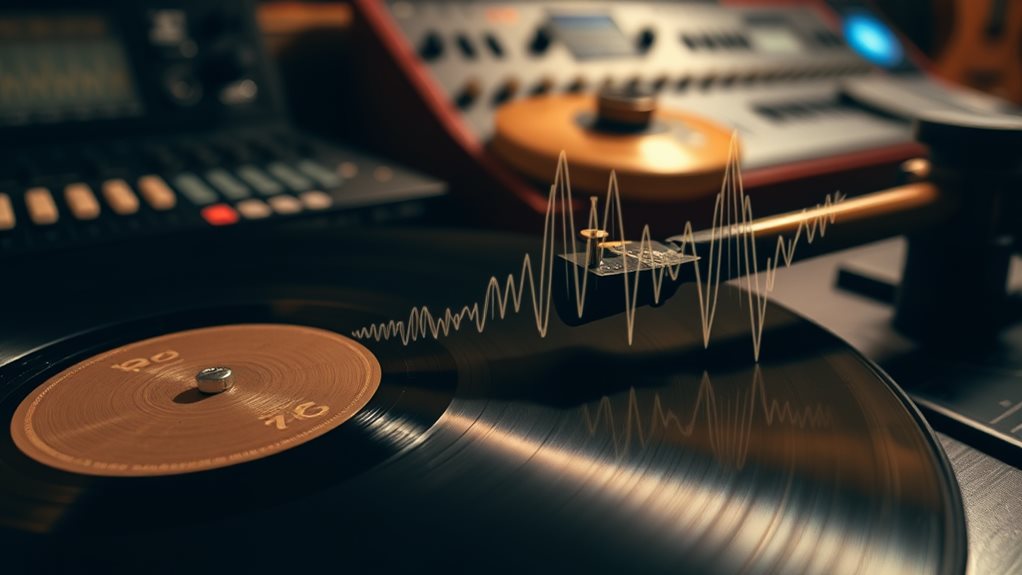
American occupation significantly altered the Philippine soundscape**. This change was fueled by the introduction of American musical genres like blues and jazz, which spread through jukeboxes and radio. The jazz evolution in the Philippines blended Afro-American sounds with Filipino traditions, resulting in a unique rhythm fusion. For example, the blues influence contributed to the development of Pinoy jazz**, a genre that combined American blues with Filipino sensibilities.
The American period saw a significant cultural exchange** in the Philippines, with the introduction of rhythm and blues shaping both musical production and popular culture. This led to the emergence of Pinoy Pop (P-Pop), a blend of American pop and Filipino sensibilities. Taglish music, which mixed Tagalog and English lyrics, became popular, reflecting the changing national identity. The fusion of traditional genres like kundiman with Western styles demonstrated a unique musical synthesis. For instance, the song "Dahil Sa Iyo" by Mike Velarde Jr. is a classic example of kundiman** influenced by Western music.
Music became a medium for cultural resistance** during the American period, particularly during times of political instability. This is evident in the songs of Asin**, a Filipino folk rock band that used music as a form of protest.
The American musical influence in the Philippines wasn't merely imitative; it spurred creativity and the formation of distinctly Filipino sounds**. The blending of musical styles and lyrical approaches shows the multifaceted impact of this period on Philippine music**.
The Rise of OPM
Original Pilipino Music (OPM) is a vibrant and multifaceted genre deeply rooted in the Philippines' rich musical heritage. It originated from government-sponsored efforts during the Marcos era to promote Filipino identity through music, a cultural fusion stemming from traditional Filipino music and influences ranging from Malay and Chinese to Islamic cultures.
The term "OPM" was coined in the 70s and 80s, succeeding the Manila Sound era. This period saw the popularization of upbeat, disco-influenced tunes, catapulting artists like Rico J. Puno to stardom. OPM's development involved a conscious effort to promote the Tagalog language through annual songwriting competitions, solidifying its role in shaping national identity.
OPM's impact is undeniable, with over 10 billion streams on Spotify, proving its enduring appeal. The genre is characterized by a blend of ballads, novelty tunes, and rap, with unique lyrical themes reflecting both everyday life and socio-political realities.
Indigenous elements like the kundiman**** are smoothly integrated into Western musical conventions, showcasing OPM's cultural fusion. This cultural fusion continues to evolve, with lyrical themes remaining diverse and reflecting the experiences and perspectives of Filipino artists and their audiences across generations.
The genre's enduring success showcases the power of music in forging a national identity and celebrating a shared cultural experience.
Pinoy Rock and Pop
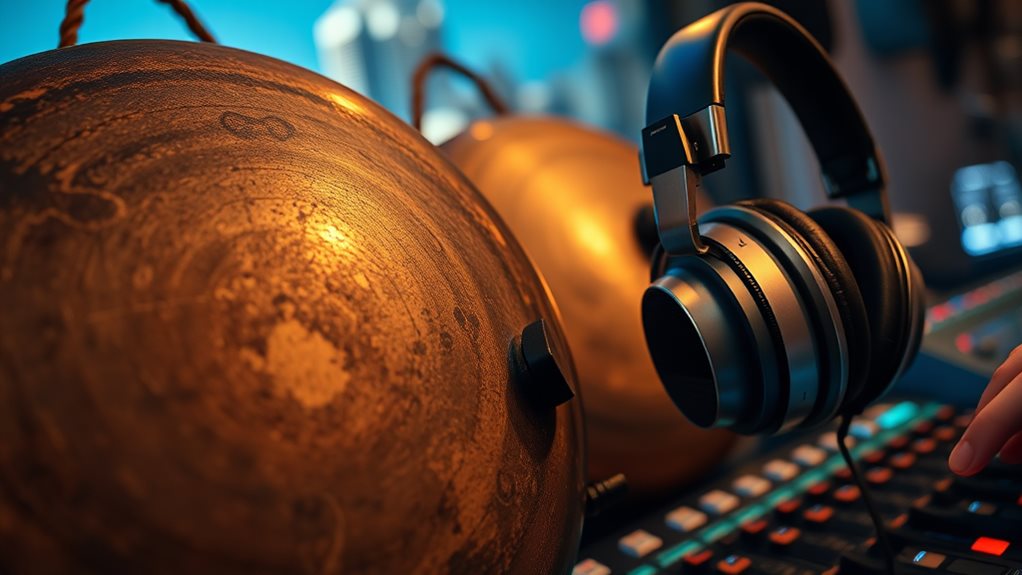
The evolution of Pinoy rock and pop is deeply rooted in the socio-political climate and artistic growth of the Philippines. Pinoy rock originated in the 1970s**, emerging during a time of social unrest. Bands like the Juan de la Cruz Band pioneered a unique sound by combining local influences with blues-rock elements. This genre was often nationalistic in nature**, using Tagalog lyrics to reflect and echo the counterculture movements of the time.
The 1980s saw the peak of Pinoy rock, with bands like The Dawn and Razorback dominating the scene. These bands incorporated heavier genres like metal and punk, making Pinoy rock the soundtrack of protests**** and solidifying its place in Filipino identity.
The genre continued to evolve in the 1990s, with bands like Eraserheads, Rivermaya, and Parokya ni Edgar achieving mainstream success by blending alternative and pop elements. This made Pinoy rock more accessible**** and paved the way for further diversification.
The sound of Pinoy rock was further diversified by the emergence of all-female bands and solo artists. The 2000s onwards saw the rise of indie rock, with bands like Up Dharma Down and Slapshock leading the charge. Emo and alternative rock also gained traction during this time.
Today, contemporary bands seamlessly blend indie, pop, and traditional OPM elements****, showcasing the lasting impact of Pinoy rock on the Filipino music landscape.
P-Pop's Arrival
P-pop's evolution is a blend of cultural influences and innovative production****. This blend can be seen in the shift from the folk-rock sounds of artists like Hotdog to the polished productions of modern groups. The P-pop evolution is a reflection of the changing cultural identity in the Philippines.
P-pop's journey as a distinct genre began with a mix of Western and Filipino elements****. Groups like SB19 have successfully blended Western pop sensibilities with distinctly Filipino elements, creating a sound that resonates both locally and internationally.
This blend has contributed to the global success of P-pop, with SB19's success on Billboard charts marking a turning point for the genre.
The rise of online platforms like YouTube and Spotify has allowed P-pop to reach a global audience. This increased exposure has led to the creation of strong fan bases and encouraged original compositions through songwriting competitions.
P-pop's adaptability is also evident in the introduction of the idol group format by MNL48, which showcases the genre's ability to evolve and incorporate new styles.
The modern P-pop sound is distinctly Filipino, despite being influenced by K-pop and J-pop. This unique sound is a testament to the genre's ability to blend global trends with local expressions.
P-pop's dynamic fusion of global trends and local expressions continues to shape its identity and contribute to its growing global popularity.
Digital Music Production
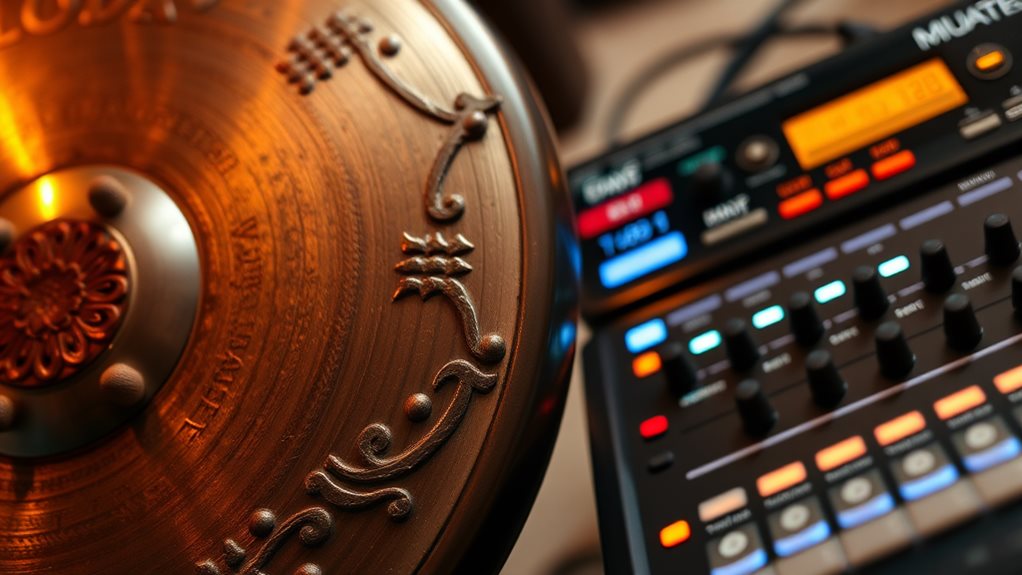
Digital Music Production: A Comprehensive Guide for Aspiring Artists****
Digital music production is an essential skill for aspiring artists, revolutionizing the music creation process. This guide will cover the entire process, from songwriting and arranging to tracking and mixing, using digital tools.
Understanding Digital Audio Workstations (DAWs)
A DAW is the central hub for multi-track projects, allowing artists to record, edit, and mix music. Examples of popular DAWs include Ableton Live, FL Studio, and Logic Pro X.
Artists can experiment with virtual instruments, expanding their sonic palette beyond traditional instruments. For instance, a digital piano can be used to create a grand piano sound without the need for an actual instrument.
Mastering Production Techniques
Layering sounds is a key technique to add depth and richness to a track. This can be achieved by combining multiple virtual instruments or recording multiple tracks of the same instrument.
Sampling and loops can also be used to create creative textures. For example, a hip-hop producer might use a sample of a jazz song to create a unique drum pattern.
Sound Design and Audio Engineering****
Sound design involves using plugins and effects to shape audio. Artists can use EQ and frequency management techniques to balance their mixes.
EQ techniques include boosting low frequencies for bass-heavy sounds and cutting high frequencies for smooth vocals. Advanced techniques like parallel compression and sidechain compression can elevate productions.
Parallel compression involves blending a compressed copy of an audio signal with the original signal, while sidechain compression involves ducking one audio signal when another signal is present.
Collaboration and Communication
Digital music production offers exciting possibilities for creative collaboration. Artists can easily share projects and collaborate remotely.
Effective communication strategies include using project management tools, setting clear goals, and establishing a common language****. Understanding technical aspects, such as file formats and software compatibility, is also crucial for smooth teamwork.
Elevating Your Music Production Process
By mastering the use of digital tools and refining production techniques, artists can simplify their music production process and elevate the standard of their creative work.
Key takeaways include experimenting with virtual instruments, layering sounds, and using EQ and frequency management techniques. With practice and dedication, aspiring artists can produce high-quality music that showcases their unique sound.
Independent Artists Rise
The Philippine music scene is witnessing a significant rise in independent artists, who are successfully competing with major labels like Star Music and Viva Records. Independent artists are securing significant chart positions alongside major label acts, showcasing their growing influence across diverse genres.
The shift in Filipino music consumption is attributed to the growing demand for unique sounds and authentic storytelling. Listeners are actively seeking music that reflects their diverse cultural experiences. This trend is seen in various genres, including hip-hop and pop, where independent artists are making a mark.
The rise of streaming platforms like Spotify has played a crucial role in the success of independent artists. Streaming platforms have increased local music consumption, providing independent artists with exposure to a broader audience. This has fostered a collaborative environment where artists support each other and push creative boundaries.
Notable independent artists like TJ Monterde are consistently charting, demonstrating the power of independent releases. TJ Monterde's chart success is a testament to the impact of independent music in the Philippine market.
Independent artists are leveraging platforms to showcase their unique cultural storytelling, reaching both local and international audiences. Platforms provide a space for artists to share their authentic experiences and connect with listeners worldwide.
Despite economic challenges, independent artists in the Philippines demonstrate resilience and creativity in their work. Their ability to adapt and innovate has contributed to the growth of the independent music scene.
The independent movement isn't just about chart success; it's about cultural impact. It signifies a growing appreciation for diverse voices and the strength of independent artistry in the Philippines. This movement is characterized by a powerful blend of authentic expression and innovative music-making, resonating deeply with Filipino listeners.
Global P-Pop Impact
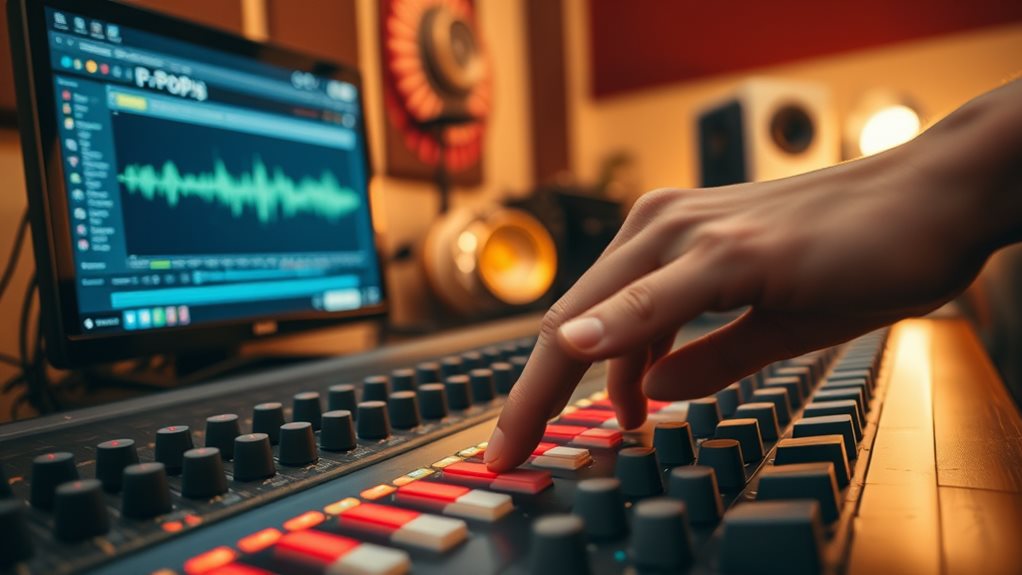
P-pop, or Philippine Pop, has made a significant impact globally, driven by cultural fusion and genre blending. This fusion of traditional Filipino music with contemporary Western influences creates a unique sound.
The Philippine music scene has been characterized by a surge in independent music and P-pop evolution. This evolution has led to international recognition, with artists like SB19 and BGYO earning nominations at prestigious awards shows.
Several key factors have contributed to P-pop's global success:
- Global collaborations have increased P-pop's international reach, with artists working with international musicians to create new sounds.
- Music streaming platforms like Spotify and Apple Music have played a crucial role in spreading P-pop globally.
- Strong online fan engagement has driven the genre's international popularity, with social media platforms being used to connect with fans worldwide.
- Cultural fusion has created a unique sound, blending Filipino and Western musical styles.
The rise of P-pop showcases the power of cultural fusion. The use of Tagalog lyrics and Filipino themes represents a powerful form of identity expression****, drawing international fans while celebrating Filipino culture.
Global collaborations have enhanced the genre's reach and creative depth, showcasing Filipino talent to a worldwide audience.
The P-pop evolution is a testament to the talent, dedication, and ever-evolving sound of Philippine Pop. Skillful marketing and genuine artistic merit have built a global fanbase****, solidifying P-pop's place on the global music scene.
Filipino Music's Legacy
Four centuries of history and cultural exchange have shaped the rich tapestry of Filipino music. This musical journey reflects a continuous process of cultural preservation and musical evolution.
The Spanish colonization introduced new instruments and musical forms, blending with existing traditions to create something uniquely Filipino. This fusion is evident in the country's music scene today. For example, the guitar, introduced by the Spanish, has become a staple instrument in many Filipino music genres. This blend of influences has contributed to the nation's resilience and musical diversity.
The impact of American influence on Filipino music is undeniable. American genres like blues and rock and roll were absorbed and adapted, resulting in the creation of a distinct Filipino rock scene**. This process highlights the dynamic interplay between global influences and local creativity. For instance, Filipino musicians incorporated American music styles into their work, producing artists like Juan de la Cruz and their iconic song "Himno."**
Filipino music has also been used as a powerful tool for social and political commentary. Songs like "Bayan Ko" served as anthems of national unity**. Artists like Freddie Aguilar used folk music to tackle social issues, such as poverty and inequality**.
The Manila Sound blended various genres into a distinctly Filipino sound, addressing social issues and promoting national unity. This legacy of musical activism and innovation underlines the importance of cultural preservation.
Contemporary artists continue to build upon this rich history, seamlessly merging traditional and modern elements into their music. This musical heritage reflects not just a nation's past, but also its enduring spirit and ongoing cultural evolution.
Questions and Answers
What Instruments Are Used in Modern P-Pop?
Traditional instruments like kulintang and agung are used in modern P-pop. These instruments are often blended with modern elements, such as synthesizers and electronic drums, to create unique fusion sounds.
How Has Music Tech Changed Filipino Music?
Filipino music has undergone significant changes with the rise of music tech. Advances in digital technology have revolutionized the music industry, affecting various aspects of music creation, sharing, and consumption.
One key impact is on music production. Software applications like FL Studio and Ableton Live have made it easier for artists to produce high-quality music. These digital audio workstations (DAWs) provide a wide range of tools and plugins that enable musicians to record, edit, and mix their tracks with greater ease and precision. For example, Filipino artists like Moira Dela Torre and IV of Spades have used these software applications to produce chart-topping hits.
Music tech has also transformed the way music is distributed and consumed. Streaming platforms like Spotify and YouTube Music have made it easier for artists to reach a wider audience. These platforms allow users to access millions of songs, discover new artists, and create personalized playlists. In the Philippines, streaming platforms have helped popularize local music genres like OPM (Original Pilipino Music) and Pinoy hip-hop.
Furthermore, music tech has enabled the creation of new hybridized sounds. The fusion of traditional Filipino music with modern electronic and digital elements has resulted in innovative genres like electronic OPM and Pinoy trap. For instance, Filipino artists like Quest and Loonie have incorporated elements of electronic dance music (EDM) and hip-hop into their tracks, resulting in a unique sound that blends traditional and modern styles.
Who Are Some Notable Filipino Music Producers?
Notable Filipino music producers work across various genres.
Filipino music producers are known for integrating their cultural influences into their production styles. This integration often results in unique genre fusions, showcasing the diversity of Filipino music. For example, producers like Wilbert Ross and Jonathan Ong combine elements of OPM (Original Pilipino Music) with international styles to create distinct sounds. Some notable Filipino music producers include Francis Magalona, known for his work in OPM, and APO Hiking Society's Boboy Garovillo, who has produced music for various Filipino artists.
How Much Does It Cost to Produce a Filipino Song?
Producing a Filipino song can cost anywhere from P5,000 to P35,000 or more, depending on several factors. The expenses for recording and desired production quality significantly influence the total cost. Recording expenses include studio rental fees, equipment costs, and engineer fees, which can vary greatly. Desired production quality also affects the cost, as higher quality productions often require additional instruments, backup vocalists, and sound engineers, increasing the overall cost.
Has AI Impacted Filipino Music Creation?
Filipino music creation is being slowly influenced by AI.
Artificial intelligence (AI) is gradually impacting the music industry in the Philippines. This emerging trend is seen in AI collaborations with Filipino artists and the growing role of AI in songwriting.
AI collaborations in Filipino music involve the use of algorithms to create beats, melodies, and even entire songs. For example, some local artists have used AI-powered tools to produce music, such as the AI-generated single "Hello, Love Goodbye" by Filipino artist Janine Teñoso. AI collaboration can help artists experiment with new sounds and styles.
AI songwriting is also becoming more prominent in the industry. AI algorithms can analyze patterns in popular songs and generate new lyrics and melodies based on that data. This can aid songwriters in creating catchy and commercially viable songs. However, there are concerns that over-reliance on AI might lead to a loss of originality and creativity in music.
The future of the Filipino music industry is likely to be shaped by AI. AI can help artists reach a wider audience and increase their online presence. Additionally, AI can assist in music production, making it more efficient and cost-effective. However, it is essential for the industry to find a balance between AI-generated content and human creativity to maintain the unique sound and character of Filipino music.